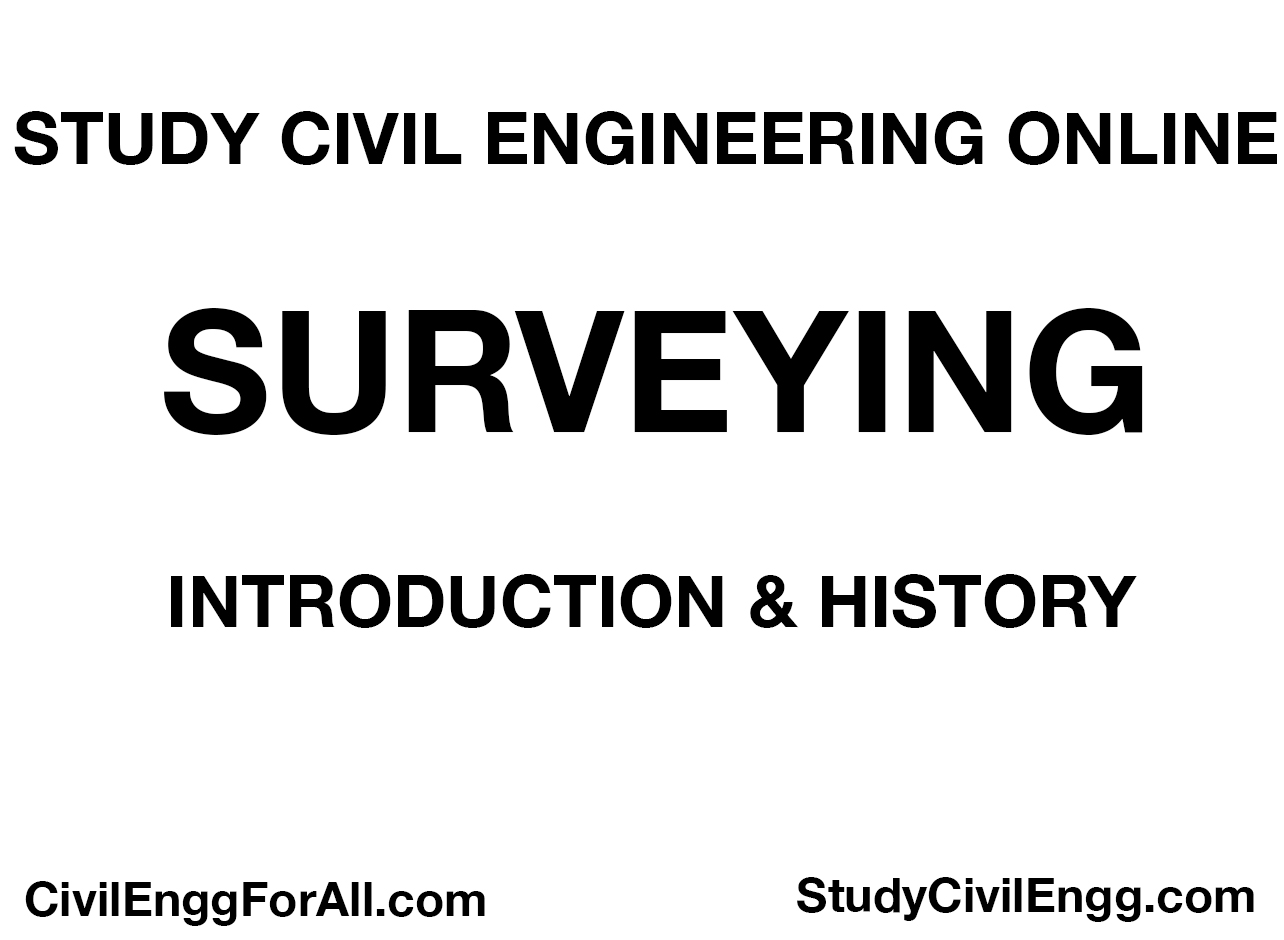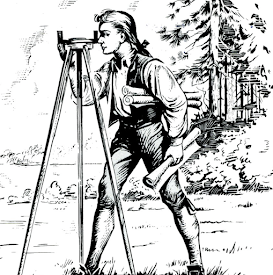SURVEYING - INTRODUCTION AND ITS HISTORY (StudyCivilEngg.com)
INTRODUCTION TO SURVEYING AND ITS HISTORY
INTRODUCTION TO SURVEYING
Surveying is the science and art of determining the relative positions of various points above, on or below the surface of the earth. The relative positions are determined by measuring horizontal distances, vertical distances (elevations), horizontal angles and vertical angles accurately using various surveying instruments. After taking the measurements in the field, computations are done and the plans and maps are prepared in the office. These plans and maps are used for planning of engineering works, marking of boundaries, computations of areas and volumes, and various other purposes.
Surveying also includes the art of setting out or locating the points on the ground from the plan or map. The points and lines have to be located on the ground before starting the construction of engineering work, such as buildings, roads, bridges, and dams. The first stage in all the big projects is generally to survey the area and to prepare plans. These plans are used in the preparation of the detailed drawing, design and estimate of the project. After finalising the drawings, setting out is done by establishing the various points and lines on the ground from the drawing.
Surveying, although simple in concept, requires great skill and practice for doing the work accurately and economically. It requires basic knowledge of various disciplines such as mathematic, physics, geodesy and astronomy. The need for accurate surveying is increasing rapidly with the development in technology. The construction of modern buildings, highways, railways, high dam, long bridges, and tunnels requires accurate surveying. As the cost of the land the property is increasing rapidly, high accuracy is required in marking the boundaries and the land subdivision.
Below are the objectives of Surveying-
- To take measurements to determine the relative positions of the existing features on or near the ground.
- To layout or to mark the positions of the proposed structure on the ground.
- To determine areas, volumes and other related quantities.
HISTORY OF SURVEYING
Surveying is perhaps as old as human civilisation. Surveying in one form or the other had been used for distinguishing one man’s land from that of another since time immemorial. There are frequent references to ownership and transfer of the land in ancient books. The Babylonians practised some type of surveying as early as 2500 B.C. Surveying in some form was used in India and Egypt to divide the land for taxation purposes even 1400 B.C.
Surveying methods were used to control points in the Nile Valley Civilisation. Surveying techniques were also used for setting out and establishing points and lines on the ground for the construction of pyramids and huge buildings. The surveyors in those times used ropes for laying out of the sides and checking the squareness of the angles of the rectangles. They used triangular frames fitted with plumb bobs to obtain level foundations.
Romans developed improved methods of surveying during the Roman period. They used measuring wheels, called ondometers, for measuring distances, and groma for laying off right angles. They devised a system of coordinates for laying out buildings, forts, churches, etc. However, main developments in surveying took place in the nineteenth century after the invention of the telescope. Excellent instruments such as magnetic compass, levelling instruments and theodolities were invented for taking the measurements rapidly and accurately.
In twentieth century, the surveying instruments and methods were further improved. Precise levelling instruments and modern optical theodolites were invented. Electronic Distance Measuring (E.D.M.) instruments were introduced for very accurate measurements of distances. Liberal use of computer and other electronic devices is made in the modern surveying. New methods of photogrammetric surveying have been developed. The use of lasers in surveying is also increasing. These days surveying is not limited to the measurements on or near the earth’s surface. It now extends to the deep sea and extra-terrestrial space. Surveying principles have even been used in rocket tracks, missiles and space vehicles.






Post a Comment